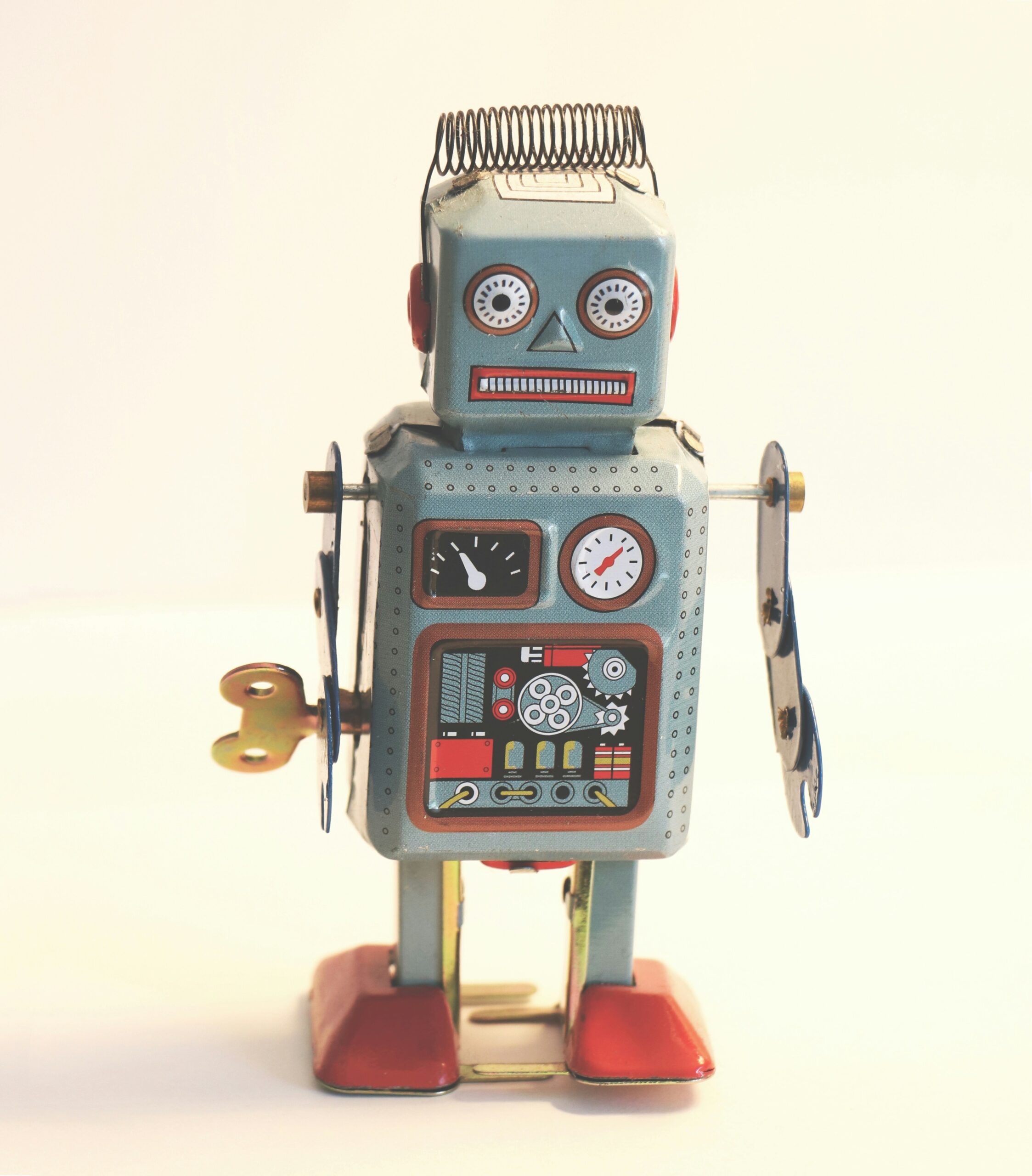Why AI Won’t Replace Your Therapist
Understanding the Limits of Machine Intelligence in Human Healing
In recent years, artificial intelligence (AI) has infiltrated nearly every domain of life—from writing code to diagnosing disease, from generating art to tutoring children. Naturally, many people are now asking: Can AI replace a human therapist? With mental health support increasingly offered through apps and AI chatbots, and platforms like ChatGPT holding human-like conversations, this question is more relevant than ever.
But the short answer is: No. Not now. Probably not ever—not in the ways that matter most.
This article unpacks the psychological, relational, and neuroscientific reasons why artificial intelligence cannot replace your therapist. We’ll explore current AI capabilities, the nature of human suffering, the core mechanisms of therapeutic change, and what recent literature says about trust, empathy, and meaning-making in mental health.
AI Is Impressive, But It Isn’t Conscious
Let’s start with the basics: AI systems like ChatGPT are not sentient. They don’t feel. They don’t understand. They predict what comes next in a sentence based on probabilities from vast training data (Bender et al., 2021). They are linguistic pattern matchers—not minds.
This distinction is critical. Effective therapy is not just about parsing sentences or offering good advice. It’s about being with a person in their suffering, exploring their story, and co-creating a new narrative. Psychotherapy works not just through what is said, but who is saying it, why, and how it’s received.
AI, no matter how intelligent it seems, cannot bring human consciousness, embodied presence, or authentic emotional reciprocity into the room.
What Actually Heals in Therapy?
To understand why AI can’t replace therapists, we need to understand what makes therapy effective in the first place.
The Therapeutic Alliance
Across all modalities—CBT, psychodynamic, ACT, EMDR—research consistently finds that the therapeutic alliance is the most robust predictor of positive outcomes (Norcross & Lambert, 2018). This alliance includes mutual trust, shared goals, and emotional attunement.
A recent meta-analysis by Flückiger et al. (2018) showed that the strength of the therapeutic alliance accounts for approximately 7.5% of the variance in outcomes—more than any specific technique.
Can AI build trust? Maybe. Can it form a bond of shared humanity rooted in empathy, vulnerability, and co-regulation? Unlikely.
Empathic Attunement
Empathy is more than mirroring emotions—it involves feeling with someone, mentally simulating their experience, and offering a warm, attuned response. This is not a scriptable action. It’s a neurobiological dance, involving the mirror neuron system, vagal regulation, and oxytocin release (Decety & Fotopoulou, 2015; Schore, 2021).
Even the most advanced chatbot cannot detect facial microexpressions, shifts in vocal tone, or the subtle physiological synchrony that occurs in a therapeutic space. And without real empathy, therapy becomes a sterile exchange of information—not a healing relationship.
AI Can Mimic—but Not Model—Human Development
Another limitation: AI doesn’t change. It doesn’t grow in the human sense. A therapist evolves over years through introspection, supervision, and life experience. This ongoing development enables them to model emotional regulation, reflective thinking, and mature relational patterns to their clients.
This is especially vital for male clients between 25 and 55, who may struggle with emotional articulation, interpersonal vulnerability, or internalized stoicism. A well-attuned male therapist can model what it means to feel, think, and speak with clarity and courage—a process known as “therapist self-disclosure,” which research shows can deepen trust and therapeutic progress (Hill & Knox, 2002).
An AI may say all the right things, but it cannot embody the transformation it recommends.
The Role of Meaning and Existential Insight
Many men in their late twenties to fifties experience what existential psychologist Irvin Yalom (1980) describes as boundary experiences—moments that confront us with death, freedom, isolation, or meaninglessness. Divorce, career failure, health crises, and aging parents all provoke deep questions that go beyond cognition.
In these moments, therapy offers more than solutions. It offers companionship in the dark. It provides a sacred space where one can grapple with meaning—not just fix symptoms.
Recent research in existential psychotherapy (Vos et al., 2015) shows that helping clients engage with these ultimate concerns leads to reductions in depression and anxiety, and increases in well-being.
AI cannot sit with death. It cannot hold space for mystery. It cannot help you author your life—because it has no life of its own.
Language vs. Presence: The Neuroscience of Connection
Even if AI could master all the right words, it still lacks what psychologist Louis Cozolino (2014) calls the “social synapse.” Human connection involves more than verbal exchange—it engages right-brain-to-right-brain processes that regulate emotion, build trust, and foster change.
For example, co-regulation—the calming that occurs when we are in the presence of a safe and attuned other—depends on real-time physiological feedback. The therapist’s face, breath, posture, and tone all send signals that help the client’s nervous system shift from fight-or-flight to safety and openness (Porges, 2011).
AI, by contrast, operates without a body. Without breath. Without the warm, regulating presence that our brains evolved to respond to.
The Illusion of Intimacy: AI and the Therapeutic Placebo
Some argue that if clients feel helped by AI, does it matter whether it’s “real” or not?
Indeed, early studies show promise. A 2022 randomized control trial by Fitzpatrick et al. found that Woebot, an AI CBT chatbot, reduced symptoms of depression over two weeks. Users reported that the AI felt empathic and helpful.
But there’s a key distinction: these studies reflect short-term symptom relief, not deep transformation. The placebo effect of “being heard” can be powerful, especially for subclinical distress. But when clients face complex trauma, attachment wounds, or personality disorders, the depth and duration of healing require more than a clever script.
AI may simulate empathy—but simulated connection is not the same as real connection. And eventually, clients know the difference.
The Ethical and Clinical Risks of AI Therapy
Even beyond capability, there are serious ethical concerns with using AI in therapy:
Privacy and confidentiality: AI systems store data. If not properly secured, sensitive conversations could be accessed or misused.
Lack of accountability: AI cannot be sued, reported, or sanctioned. If it harms a client, who is responsible?
Bias and inaccuracy: AI models are trained on imperfect human data and can perpetuate harmful stereotypes or provide inappropriate advice (Bender et al., 2021).
Inability to respond to crisis: AI cannot call emergency services, assess suicide risk in nuanced ways, or offer containment during acute emotional episodes.
In therapy, safety is paramount. No tool, however well-designed, should take the place of human presence when someone is suffering profoundly.
AI as a Tool, Not a Therapist
To be clear, AI can play a role in mental health. It can:
Help scale access to psychoeducation and basic CBT tools.
Offer 24/7 support for mild-to-moderate distress.
Aid therapists by summarizing sessions or analyzing patterns.
Reduce stigma and help men take the first step toward getting help.
Think of AI not as a replacement, but as a bridge. For men who feel ashamed to talk about their struggles, a chatbot might be a low-risk entry point. But it should lead them toward, not away from, real human connection.
The Return to Relationship
In a culture obsessed with productivity, many men have been taught that emotions are liabilities, vulnerability is weakness, and relationships are distractions. Therapy challenges this myth. It reveals that what is most personal is most universal, and that suffering loses its grip when shared in the light of human presence.
AI will continue to evolve. It may become astonishingly good at simulating conversation. But it will not feel your pain. It will not witness your tears with quiet strength. It will not offer you a safe place to be fully seen.
And that’s what healing demands.
Conclusion: Why AI Won’t—and Shouldn’t—Replace Your Therapist
Technology may change the tools we use, but it cannot replace the timeless truth that healing is relational. Therapy is not just about fixing a problem. It’s about reclaiming your story, rebuilding your self, and reconnecting with your humanity.
If you’re a man navigating stress, shame, isolation, or purpose—don’t settle for a machine that mimics empathy. Seek out a real human who has walked through darkness and knows how to guide others toward the light.
Not because you’re broken.
But because we all need someone to walk with us.
References
Bender, E. M., Gebru, T., McMillan-Major, A., & Shmitchell, S. (2021). On the Dangers of Stochastic Parrots: Can Language Models Be Too Big? In Proceedings of the 2021 ACM Conference on Fairness, Accountability, and Transparency (pp. 610–623). https://doi.org/10.1145/3442188.3445922
Cozolino, L. (2014). The neuroscience of human relationships: Attachment and the developing social brain (2nd ed.). W. W. Norton & Company.
Decety, J., & Fotopoulou, A. (2015). Why empathy has a beneficial impact on others in medicine: unifying theories. Frontiers in Behavioral Neuroscience, 8, 457. https://doi.org/10.3389/fnbeh.2014.00457
Fitzpatrick, K. K., Darcy, A., & Vierhile, M. (2017). Delivering cognitive behavior therapy to young adults with symptoms of depression and anxiety using a fully automated conversational agent (Woebot): A randomized controlled trial. JMIR Mental Health, 4(2), e19. https://doi.org/10.2196/mental.7785
Flückiger, C., Del Re, A. C., Wampold, B. E., Symonds, D., & Horvath, A. O. (2018). How central is the alliance in psychotherapy? A multilevel longitudinal meta-analysis. Journal of Counseling Psychology, 65(4), 419–435. https://doi.org/10.1037/cou0000277
Hill, C. E., & Knox, S. (2002). Self-disclosure. In J. C. Norcross (Ed.), Psychotherapy relationships that work: Therapist contributions and responsiveness to patients (pp. 255–265). Oxford University Press.
Norcross, J. C., & Lambert, M. J. (2018). Psychotherapy relationships that work III. Psychotherapy, 55(4), 303–315. https://doi.org/10.1037/pst0000193
Porges, S. W. (2011). The polyvagal theory: Neurophysiological foundations of emotions, attachment, communication, and self-regulation. W. W. Norton & Company.
Schore, A. N. (2021). Right brain psychotherapy. W. W. Norton & Company.
Vos, J., Craig, M., & Cooper, M. (2015). Existential therapies: A meta-analysis of their effects on psychological outcomes. Journal of Consulting and Clinical Psychology, 83(1), 115–128. https://doi.org/10.1037/a0037167
Yalom, I. D. (1980). Existential psychotherapy. Basic Books.





